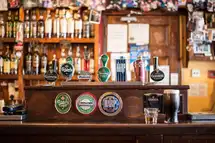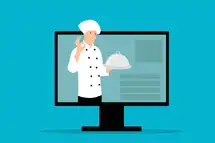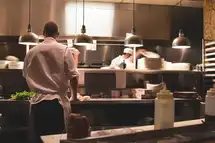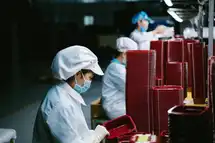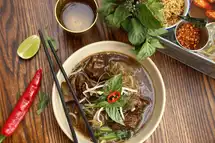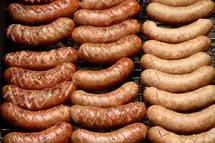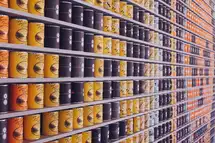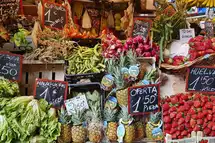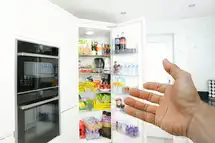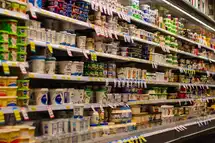What is a food safety plan ?
A food safety plan is a plan that outlines how a food business will ensure that the food they serve is safe to eat. It should include what procedures the business will put in place to make sure that food is prepared, stored and served safely.
7 Steps of a Typical Food Safety Plan For Every Type of Foodservice Business
What is a Food Safety Plan?

Early in the first week of April 2022, federal officials in the United States started investigating a multi-state outbreak of norovirus infections. The infection was traced to raw oysters from Canada. By the end of the first week of June 2022, there were over 192 cases reported from 13 U.S. states- California, Colorado, Florida, Hawaii, Illinois, Maine, Minnesota, New Jersey, Nevada, New York, Oregon, Texas, and Washington.
The Food and Drug Administration (FDA) and the Centers for Disease Control and Prevention (CDC) in the United States got into firefighting mode to control the outbreak. While Canada issued recalls, in the U.S., retailers, consumers, and restaurants were warned against selling or eating oysters from certain harvest areas in British Columbia. CDC reported that the oysters could have been contaminated with norovirus from dirty water that had sewage or vomit in it.
This is just one of the many cases of foodborne illnesses in the U.S. In January 2022, the owners of Roanoke's Famous Anthony's restaurant filed for bankruptcy after two of their restaurant locations were hit with a hepatitis A outbreak originating from one of their food service workers. Four people died from the outbreak, 36 people were hospitalized, and 52 more were grievously ill. One person required a liver transplant as a result of the outbreak.
CDC estimates that one in six Americans yearly gets sick from contaminated food or beverages. Three thousand die from foodborne illnesses annually. In addition, the United States spends more than $15.6 billion yearly on combating foodborne illnesses, according to the U.S. Department of Agriculture (USDA). As a result, food safety is a major cause for concern for public health authorities in the state.
Maybe one can't control all the cases of foodborne illnesses that spring up, but one can avert most of them if the food industry is more vigilant about food safety plans at their outlets. For example, knowing the food's origin, the supply chain route, precautions taken during the processing and transportation, and other details can prevent contaminated food from getting consumed. One of the best ways to do that is to have an effective food safety plan across the units involved in processing, selling, and serving food.
A Food Safety Plan is a system to help ensure you don't fall sick from your chocolate pudding, chicken soup, or oysters! It is a comprehensive document outlining the preventive control measures that must be implemented to ensure that foodborne illness and injury do not occur.
What's a Process-based Food Safety Plan?
As a restaurant operator or manager, you have a host of tasks to see through on a busy weekend night. From keeping up with orders, to tracking inventory and ensuring everything is in shipshape in the kitchen, you've got your hands full. And since it's a weekend night, orders have multiplied. From pork chops and chicken breasts, to salads and sandwiches, demand is high across the board. Your top priority is flavor, but without sacrificing quality or safety -- factors easily compromised on high-volume nights like this. A sure-shot way to achieve this objective is by following a process-based food safety plan.
It's good to have a robust plan in place, especially when dealing with overwhelming orders, or have a regular "special menu item" that changes frequently. For instance, you may have items like pork chops, chicken breasts, bacon, and sausages that rotate as your special menu items each day. Now, it would prove difficult for your kitchen staff to change the food safety protocol for different food types on a daily basis. Fortunately, the food safety process for these items is going to be the same since these foods are similar. And that's good news.
A process-based Food Safety plan categorizes foods by the method in which they are prepared, instead of listing them individually. A process-based plan can use one set of instructions for different menu items. For example, some of the common methods used to prepare foods include-
- No Cook- Includes items such as salads and sandwiches.
- Cook Serve- May include burgers, chicken strips, and steaks.
- Cook Chill Serve- May include potato salad, chicken salad, and similar recipes.
- Cook Chill Reheat Serve- May include items such as soups and pasta sauce.
The process-based food safety plan identifies the critical control points and critical limits in cooking and reheating hot foods and provides monitoring steps and corrective action to minimize risk at each critical control point.
Not having a food safety plan can prove costly to a foodservice business, both in terms of money and reputation.
Without a plan such businesses are at risk of making mistakes that could lead to foodborne illness, injuries, and even death.
What's a Recipe-based Food Safety Plan?
A recipe-based food safety plan includes all the components of the standard process-based food safety plan, but additional information is also added based on specific recipes.
For instance, in the case of beef stew, a recipe-based plan would typically ask to measure the temperature of the dish with a clean, sanitized thermometer. Next, it would instruct to handle raw foods with clean hands or wearing disposable gloves. It would recommend washing hands before handling food. This is to avoid contamination from touching contaminating substances or surfaces. Equipment and utensils used during preparation should be washed before and after use, returned to refrigerated storage if preparation is delayed or interrupted, and carefully cleaned before use.
A typical recipe-based food plan would have the following steps-
- Preparing
- Cooking
- Serving and holding
- Cooling
- Reheating
7 Steps of a Food Safety Plan
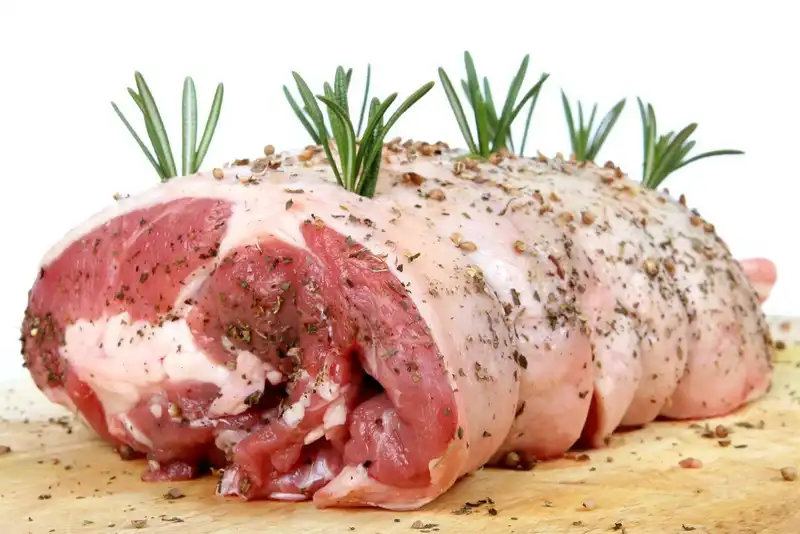
Developing a food safety plan is an important factor in preventing foodborne illnesses. The Hazard AnalysisCritical Control Points (HACCP) system was designed to reduce the risk of foodborne illness by identifying dangers at their source and devising ways to control them. Various Health Departments in the U.S. advocate HACCP's 7-step monitoring system to reduce the risk of contamination. These are the steps involved-
1. Conduct Hazard Analysis-
Conducting a detailed hazard analysis is vital in preparing a well-designed HACCP (Hazard Analysis and Critical Control Point) system. The food safety process is to identify a list of hazards within a food facility that could cause injury or illness if not controlled, and suggest appropriate measures to prevent them. A hazard can be of any type, e.g. biological (bacterium-related), chemical (toxin-related) or even physical contaminant related. One of the most common causes of food poisoning is cross-contamination with raw meat. Others are leftover detergent in cooking or storage utensils and dead insects in uncovered food.
Factors that may cause a hazard include- deficient employee skills and training; improper transportation of food; the nature of food being prepared or sold; if the person you are serving has allergies to certain ingredients; whether resources are available for sanitizing or cleaning surfaces; and if storage requirements can be met for potentially hazardous foods such as milk, eggs, and meats.
The next step is to determine which (if any) of these factors may influence the likelihood that a hazard will occur or worsen. Finally, measures necessary to control each hazard should be clearly listed.
2. Determine the Critical Control Points (CCPs)-
These are the points in food production where one can prevent, eliminate or reduce food safety hazards. CCPs include any point in a food processing operation where changes can be made to ensure food safetyfrom controlling conditions under which raw materials and ingredients are processed, to handling food safely at all stages of production, storing packaged foods, and distributing finished products. Critical control points include cooking, cooling, reheating, holding, etc. It's critical to develop and record CCPs properly.
The heat treatment process at a specific time and temperature designed to kill a particular microbiological pathogen is an example of a CCP. It ensures that even if one bacterium escapes from the heat treatment process, it will not be able to survive long enough to cause an illness. If you're preparing soup and want to ensure that it's free from pathogens, you will have to set up CCPs at every point in the production process where harmful microbes might exist. These CCPs can include the temperature of the water used to cook the food and the time it sits before being cooked.
3. Establish Critical Limits-
Each critical control point must be assigned a critical limit. A critical limit (CL) is a maximum and or minimum value that must be controlled at a CCP to prevent, reduce or eliminate the occurrence of a food safety hazard. A CL ensures that specific performance standards are met for a specific process or product. Temperature, time, physical dimensions, and the presence of target pathogens are the most common process parameters that determine critical limits. For example, the internal temperature of a chicken roast must meet its critical limit of 145 F for four minutes.
4. Establish Monitoring Procedures-
To ensure that critical limits for each critical control point are consistently met, procedures to measure and record data related to CCPs must diligently monitored. For example, when one of the critical limits for preparing pepperoni is cooking it to 155 F (68 C), the HACCP plan must include a monitoring system that uses thermometers to check the temperature and record readings in a temperature log. A thermometer is one type of monitoring system; others include temperature recording charts.
5. Establish Corrective Action-
Any deviation from the set procedure should be included within a corrective action plan. Broadly, there are five categories of causes related to food products (technical, human, process, management, and environment), but the root cause analysis must be done separately. For example, if there is a deviation in the temperature of food inside the refrigerator due to technical issues such as insulation failure or malfunctioning thermostats, it could result in the temperature of food exceeding safe levels as defined by FDA (Food and Drug Administration). Preventative measures must stop contaminated food from reaching consumers.
6. Establish Verification Procedures-
This step determines the effectiveness of a HACCP plan and ensures that everyone involved carries out each step in the production process correctly.
7. Establish a Record-keeping and Documentation System-
This will help prove that the food item was produced and handled safely. An efficient HACCP system should include information on the Hazard Analysis, HACCP plan, critical limits, monitoring of ingredients in production, corrective actions, verification steps and certification processes, and schedules for training and employee records.
What Use is a Food Safety Plan to a Foodservice Business?

Developing and implementing a food safety plan for your food business can have multiple benefits. First, it is important to note that most foodborne illnesses result from an oversight in food handling, poor personal hygiene, and contaminated surfaces or equipment for food processing or preparation. When employees in a food business learn food safety measures, they acquire skills and become aware of safe food practices. Finally, a vigorous Food Safety Plan ensures food safety in food businesses and helps create a devoted customer base.
A food safety plan helps to-
- Understand the reasons for food contamination.
- Understand various types of food contamination.
- Understand food allergens.
- Recognize the signs of food allergy during emergencies and proactively handling them.
- Identify potentially hazardous foods or high-risk foods.
- Understand foodborne illnesses caused by bacteria, viruses and other toxins.
- Know safe practices involved in the preparation of food, from storage to serving.
- Master effective sanitation practices during food preparation.
- Understand the importance of personal hygiene in the food service industry.
- Gain insights into the negative impact of improper food handling.
- Learn what practices could lead to cross-contamination of raw and cooked food.
- Know the effects of inadequate cooking.
- Understand how the storage of food at inappropriate temperatures can be damaging.
- Keep the customer satisfied by avoiding unhygienic practices.
- Learn what customers prefer in terms of cleanliness. For instance, dirty cutlery or tables could put customer off and become hazardous to their health.
You've just set up a new restaurant, but it doesn't yet have a food safety plan.
This article will help you set one up.
What is Food Safety Software?
Food Safety Management software works to preserve the quality of food at every step of the supply chain, from initial preparation, to consumption by the customer. These software solutions are a centralized source of information that help businesses produce and distribute food and beverage products in compliance with safety regulations.
With the help of food safety software restaurant operators can track supplier compliance, manage recall plans, and investigate customer complaints. It is pertinent to mention that a central food safety system helps maintains uniformity across the organization. In addition, the data on the system is updated periodically, making it an active and reliable tool that can be maintained and leveraged for future reference.
For instance, the software can help keep tabs on your kitchen inventory, which is important for food safety management. For example, if a standard loaf of bread is missing, a manager can use the software to see whether it was used in the kitchen or put back in the storeroom. If it wasn't used, can it still be used? Or is it past its expiration date? Likewise, if the chicken is nearing its expiry date, the software alerts everyone so that it can be used on priority.
Top 3 Food Safety Software for Food Businesses

Different businesses have different food safety needs, so choosing a food safety management software solution that will work best for your business is important. Some considerations include business size, warehousing capabilities (local or remote) and menu complexity. Here are three of the top food safety management software solutions for food businesses-
1. Zip HACCP-
This HACCP food safety app is easy to use and allows owners to stay on top of critical duties. Zip HACCP makes managing food safety easier by bringing a record of potentially hazardous items directly to your fingertips. With this software, management can ensure that employees don't deviate from standard operating procedures, and keep track of important duties in real-time, so they can respond quickly to crises. Zip HACCP assures restaurant owners that food quality measures are in place and consistently adhered to. If serious issues start to develop (as often happens during bussing or washing dishes), instant alerts are issued by the app so that action can be taken immediately!
The Zip HACCP app makes it easy for business owners and managers who are not present on site to analyze the alerts on their mobile app, review records, and issue follow-up measures and corrective action remotely. With solutions integrated into the app, employees can immediately control food safety issues at their end by referring to hazard controls, temperature solutions, and corrective action checklists. Zip HACCP can be downloaded from Hubworks, a specialty app store for the restaurant industry.
2. FoodLogiQ-
Food companies need an easy way to manage their suppliers and determine their compliance with food safety regulations. FoodLogiQ provides software that allows a company to eliminate armchair detective work, streamline internal traceability processes, and make data-driven decisions at any given moment.
FoodLogiQ Connect is a food safety provider that offers predictive and actionable intelligence to enhance traceability, food supply chain transparency, product recalls, and supplier management. It provides software solutions and data-driven insights to ensure that food companies maintain whole chain traceability and can pinpoint critical moments when issues arise. If quality or safety incidents emerge within a food company's supply chain, managers can respond quickly, confidently and accurately. This can only be achieved by a platform that consolidates all relevant data, making itself easily accessible to authorized users across the supply chain to facilitate swift decision-making.
3. SafeTraces-
SafeTraces is a company that helps food suppliers determine the origin and purity of the food they make available to the public. They use a combination of DNA tagging and item-level traceability through their technology to accomplish this. The key is that it works on-site (in minutes) to verify the source and safety of foods, liquids and chemicals anywhere in the supply chain, from farm to fork.
SafeTraces specializes in providing on-food safety solutions. This means it helps customers gain full visibility of the safety of food and agricultural products. In addition, a monitoring system for food suppliers and vendors enables clients to protect their brands and reduce food waste.
You need to make sure the food safety plan you've set up is followed by your staff.
Food safety software will make sure it is.


